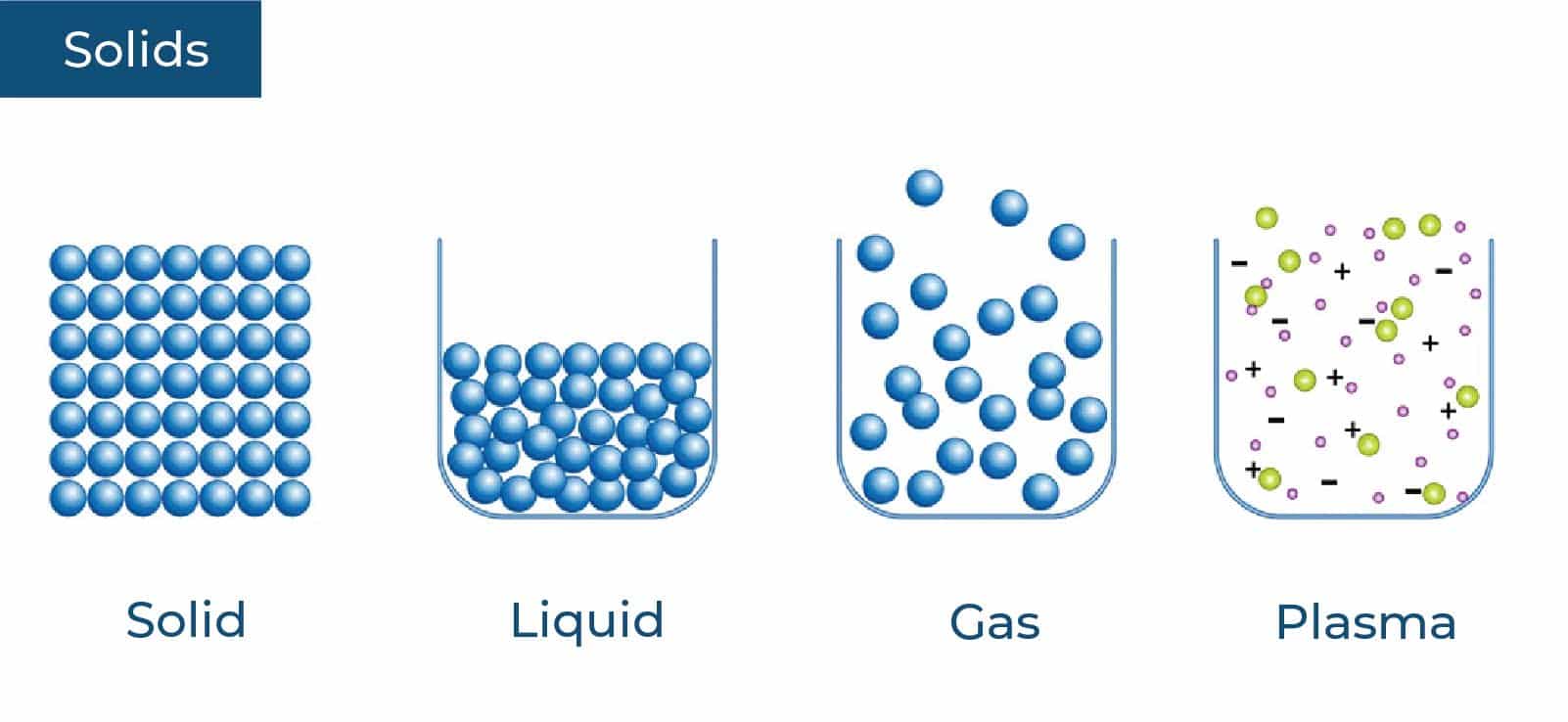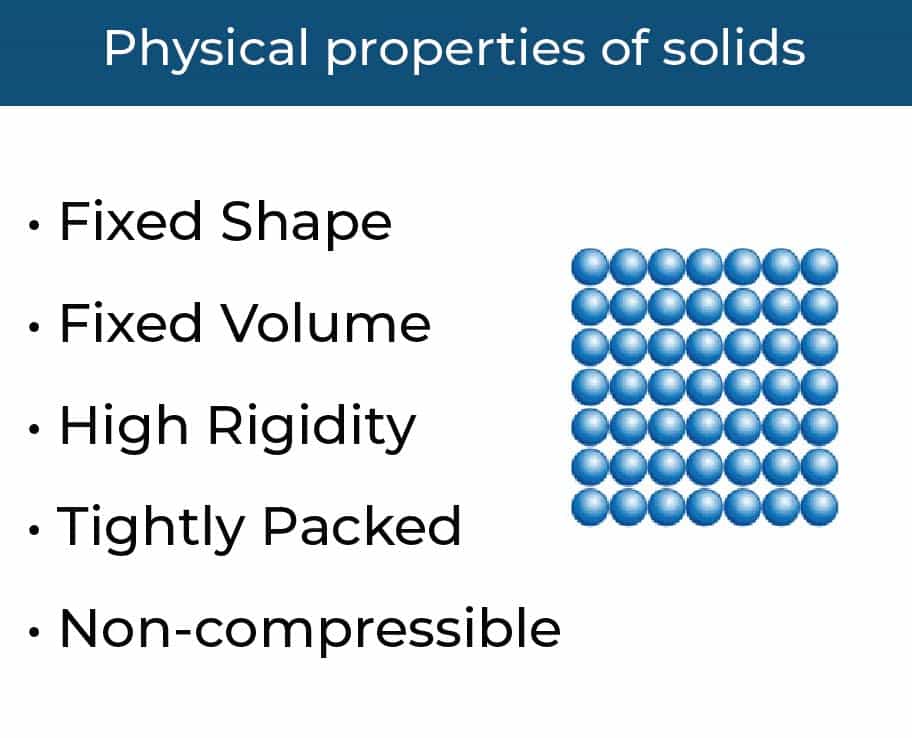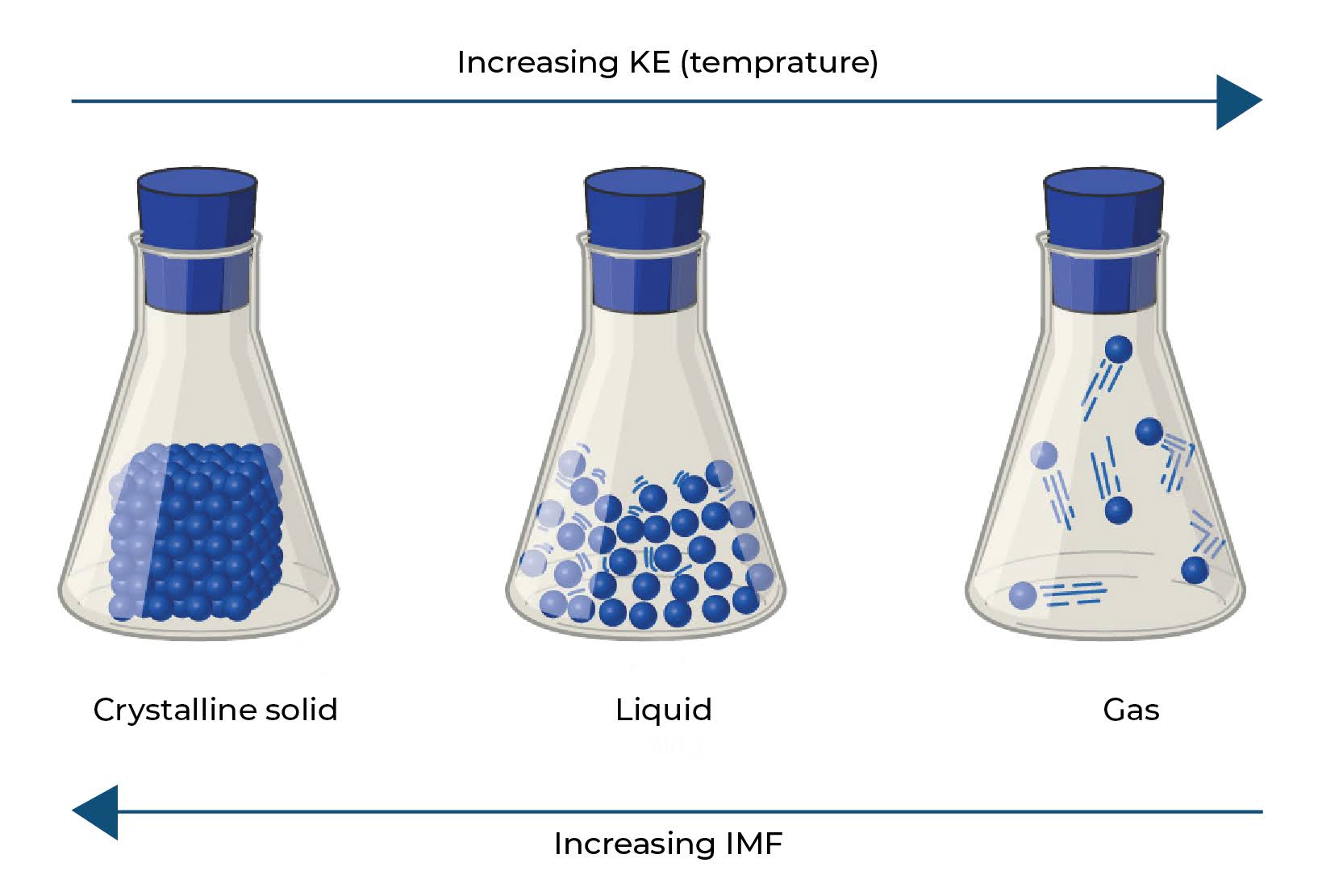What is a solid?
Grade 6 Science Worksheets
A solid is a state of matter in which the particles are tightly packed in a fixed position and have a definite shape. The attraction between the particles is strong enough to keep them from flowing and forming the shape of their container. Solids have a fixed volume and a fixed shape, and they do not change shape or volume in response to temperature or pressure changes. Rocks, metals, glass, and ice are all examples of solids.
What is a solid? - Grade 6 Science Worksheet PDF
This is a free printable / downloadable PDF worksheet with practice problems and answers. You can also work on it online.
|
Untimed | |
Sign up with your email ID to access this free worksheet.
"We really love eTutorWorld!"
"We really love etutorworld!. Anand S and Pooja are excellent math teachers and are quick to respond with requests to tutor on any math topic!" - Kieran Y (via TrustSpot.io)
"My daughter gets distracted easily"
"My daughter gets distracted very easily and Ms. Medini and other teachers were patient with her and redirected her back to the courses.
With the help of Etutorworld, my daughter has been now selected in the Gifted and Talented Program for the school district"
- Nivea Sharma (via TrustSpot.io)

Solids have a high density, a rigid structure, and a low compressibility in terms of physical properties. They also have high melting and boiling points and a low coefficient of thermal expansion.
Solids’ structures can range from being highly ordered crystals to being disordered and amorphous, as in the case of glass. Many of a solid’s properties, including its mechanical strength, electrical conductivity, and thermal conductivity, are determined by the type of bonding between its particles.
Physical properties of solids:
Solids have a definite shape that does not change despite changes in pressure or temperature. A cube of sugar, for example, retains its shape even after being dissolved in a liquid.
Solids have a definite volume that does not change when pressure or temperature are changed. A piece of wood, for example, will take up the same amount of space regardless of its temperature.
Rigidity: Solids are rigid because they resist bending or deformation. When subjected to a load, a metal bar, for example, remains straight rather than bending.

Density: When compared to liquids and gases, solids have a higher density. The density of steel, for example, is much higher than the density of water.
Solids have a low compressibility, which means that applying pressure to them causes little to no change in their volume. A metal spring, for instance, keeps its shape even when compressed.
Solids typically have high melting and boiling points, which means that it takes a lot of energy to transform them into a liquid or gas. Iron, for instance, has a melting point of 1535°C and a boiling point of 2862°C.
Low Thermal Expansion: Solids experience minimal size changes in response to temperature changes because they have a low thermal expansion coefficient. A metal rod, for instance, won’t significantly change in length when heated.
Chemical properties of Solids:
Solids also have a number of chemical properties that set them apart from other states of matter. Here are some examples of some of the most important chemical properties of solids:
Solids can react with other substances to create new compounds. Magnesium, for example, reacts with hydrochloric acid to form magnesium chloride.
Solubility: The ability of solids to dissolve in liquids to form a solution. Sugar, for example, dissolves in water to form a sweet solution.
Conductivity: Some solids conduct electricity and heat well, while others are insulators. Metals such as copper and aluminium, for example, are good conductors, whereas glass and rubber are insulators.
Acid Reactivity: Solids and acids can interact chemically to cause a reaction. For instance, when calcium carbonate and hydrochloric acid react, calcium chloride and carbon dioxide gas are created.
Solids can interact chemically with alkalis to create a reaction. For instance, when sodium hydroxide and zinc react, sodium zincate and hydrogen gas are created.
Reactivity with Air: Some solids can undergo a reaction when in contact with air. For instance, iron and oxygen can react to form iron oxide, also known as rust.
Reactivity with Water: Some solids can undergo a reaction when in contact with water. For instance, calcium hydroxide is created when calcium oxide and water react.
Be aware that these can undergo a variety of reactions depending on their composition,
crystal structure, and other elements.
Kinesthetic Properties of Solids:
The way a solid responds to forces like stress and strain is referred to as having kinesthetic properties. Some of the most significant kinesthetic characteristics of solids are listed below:
Elasticity: When a solid is subjected to a force that is within a certain range, the solid can regain its original shape. Elasticity is the name of this characteristic. For instance, when a rubber band is stretched, it snaps back into place once the force is released.
When a force is applied to a solid that exceeds a certain threshold, it can permanently deform. The term “plasticity” refers to this quality. For instance, if a metal rod is bent, it won’t straighten out after the force is removed.
When subjected to tensile force, solids can be drawn into wires without breaking. This is referred to as ductility. Copper, for example, can be drawn into thin wires without breaking.
When subjected to a compressive force, solids can be pounded or flattened into thin sheets without breaking. This is referred to as malleability. Gold, for example, can be pounded into thin sheets without cracking.
Toughness: When subjected to a force, solids can absorb a large amount of energy before breaking. Toughness is the name given to this property. Steel, for example, is a tough material that can absorb a lot of energy before breaking.
Brittleness: Even when a small force is applied, a solid can still easily break. This quality is referred to as brittleness. For instance, glass is a brittle substance that is easily broken.
“There have been times when we booked them last minute, but the teachers have been extremely well-prepared and the help desk at etutorworld is very prompt.
Our kid is doing much better with a higher score.”
6th Grade Tutoring
eTutorWorld offers Personalized Online Tutoring for Math, Science, English, and Standardised Tests.
Our Tutoring Packs start at just under $22.49 per hour, and come with a moneyback guarantee.
Schedule a FREE Trial Session, and experience quality tutoring for yourself. (No credit card required.)
Molecular force of attraction in Solids:
The force of attraction between solid molecules is responsible for holding the molecules together and giving the solid its characteristic rigidity and shape. Many of the physical and chemical properties of solids are determined by the nature and strength of these attractive forces.

The following are the primary forces of attraction between solid molecules:
Ion-ion attraction: The attraction of ions with opposite charges in ionic solids such as salts.
Covalent bond attraction is the attraction force between atoms in covalent bonds in covalent solids such as diamonds.
Metallic bond attraction is the force of attraction that exists between metal ions and the sea of electrons that surrounds them in metallic solids such as metals.
In solids with hydrogen bonds, like ice, there is an attraction between the hydrogen atoms of one molecule and the electronegative atoms (like nitrogen, oxygen, or fluorine) of another molecule.
Van der Waals forces, also known as London dispersion forces and dipole-dipole interactions, are a weak force of attraction between nonpolar molecules. Many solids depend on this kind of force, especially when the temperature is low.
The physical and chemical characteristics of solids, such as their melting and boiling points, electrical conductivity, and reactivity, are determined by the relative strengths of these forces of attraction.
Exceptions:
Some substances, known as “amorphous solids,” exhibit characteristics of both solids and liquids. These substances lack a well-defined crystalline structure but retain some solid-like properties such as definite shape and volume. Glass, certain polymers, and gels are examples of amorphous solids.
“Plastic solids,” which can deform under stress but return to their original shape when the stress is removed, are another exception to solids. The presence of dislocations in their crystal structure causes this behaviour. Metals such as lead, aluminium, and copper are examples of plastic solids.
The term “non-Newtonian fluids” refers to liquids that, depending on the applied forces, can exhibit properties of both solids and liquids. Non-Newtonian fluids, for instance, behave like solids when a constant force is applied, but behave like liquids when a sudden force is applied. Ketchup, shampoo, and toothpaste are a few examples of non-Newtonian fluids.
To conclude,particles that are closely packed together and have a fixed shape and volume are said to be in a solid state.
Strong forces of attraction, such as ion-ion attraction in solids that are ionic, covalent bonds in solids that are covalent, metallic bonds in solids that are metallic, hydrogen bonds in solids that are hydrogen-bonded, and van der Waals forces in solids that are nonpolar, hold the particles in solids together.
The type and potency of these forces of attraction govern the properties of solids, such as melting point, boiling point, electrical conductivity, and reactivity.
Amorphous solids are substances that have traits of both solids and liquids, while plastic solids are substances that take on a plastic behaviour when under stress. Then there are “non-Newtonian fluids,” which behave both like solids and like liquids.
Do You Stack Up Against the Best?
If you have 30 minutes, try our free diagnostics test and assess your skills.
FAQS
Describe a solid.
When particles of matter are compactly packed together and have a fixed shape and volume, the state of matter is said to be solid.
What holds the constituent parts of a solid together?
Strong forces of attraction, such as ion-ion attraction in solids that are ionic, covalent bonds in solids that are covalent, metallic bonds in solids that are metallic, hydrogen bonds in solids that are hydrogen-bonded, and van der Waals forces in solids that are nonpolar, hold the particles in solids together.
How are the properties of solids affected by the type of attraction forces?
Properties like melting point, boiling point, electrical conductivity, and reactivity in solids are governed by the type and strength of the forces of attraction.
Define Amorphous solids.
Amorphous solids lack a clearly defined crystalline structure but still exhibit properties of both solids and liquids.
What are solid plastics?
Under stress, solids can deform, but when the stress is removed, the solids regain their original shape. Dislocations in their crystal structure are the cause of this behaviour.
Non-Newtonian fluids: what are they?
Depending on the forces exerted on them, non-Newtonian fluids can exhibit traits of both solids and liquids.
What are some examples of amorphous solids?
Examples of amorphous solids include glass, certain polymers, and gels.
What are some examples of plastic solids?
Examples of plastic solids include metals like lead, aluminum, and copper.
What are some examples of non-Newtonian fluids?
Examples of non-Newtonian fluids include ketchup, shampoo, and toothpaste.

Kathleen Currence is one of the founders of eTutorWorld. Previously a middle school principal in Kansas City School District, she has an MA in Education from the University of Dayton, Ohio. She is a prolific writer, and likes to explain Science topics in student-friendly language. LinkedIn Profile
Affordable Tutoring Now Starts at Just $22.49
eTutorWorld offers affordable one-on-one live tutoring over the web for Grades K-12. We are also a leading provider of Test Prep help for Standardized Tests (SCAT, CogAT, MAP, SSAT, SAT, ACT, ISEE, and AP).
What makes eTutorWorld stand apart are: flexibility in lesson scheduling, quality of hand-picked tutors, assignment of tutors based on academic counseling and diagnostic tests of each student, and our 100% money-back guarantee.
Whether you have never tried personalized online tutoring before or are looking for better tutors and flexibility at an affordable price point, schedule a FREE TRIAL Session with us today.
*There is no purchase obligation or credit card requirement
Grade 6 Science Worksheets
- Inquiry process
- Nature of Science
- Scientific Inquiry
- Inquiry, Analysis and Problem Solving
- Ethical Practices
- Science and Society
- Biotic and Abiotic Factors
- Impact of Organisms
- Adaptation
- Spheres of Earth
- Natural Resources
- Environmental Issues
- Conservation of Earth
- Understanding Technology
- Abilities To Do Technological Design
- Structure of Earth
- Solar System
- Rocks and Fossils
- Earth Systems
- Plate Tectonics
- Evolution
- Magnetic Field of Earth
- Geologic Time
- Materials and Processes That Shape a Planet
- Astronomy
- Ecology
- Energy
- Kinetic and Potential Energy
- Energy Transfer
- Matter and its Structure
- States of Matter
- Physical and Chemical Changes
- Force and Motion
- Electricity and Magnetism
- Wave Interactions
- Sound
- Light
- Introduction to Life Science
- The Origin & History of Life On Earth
- Plant and Animal Cells
- Parts of a Cell
- The Cell Cycle
- How Living Organisms Get Energy
- Classification of Organisms
- How Plants Grow & Reproduce
- The Human Respiratory System
- The Human Cardiovascular System
- The Human Digestive System
- The Human Endocrine Systems
- The Human Nervous System
- The Human Muscular System
- The Human Skeletal System
IN THE NEWS

Our mission is to provide high quality online tutoring services, using state of the art Internet technology, to school students worldwide.
Online test prep and practice
SCAT
SSAT
ISEE
PSAT
SAT
ACT
AP Exam
Science Tutoring
Physics Tutoring
Chemistry Tutoring
Biology Tutoring
Math Tutoring
Pre-Algebra Tutoring
Algebra Tutoring
Pre Calculus Tutoring
Calculus Tutoring
Geometry Tutoring
Trigonometry Tutoring
Statistics Tutoring
Quick links
Free Worksheets
Fact sheet
Sales Partner Opportunities
Parents
Passive Fundraising
Virtual Fundraising
Our Expert Tutors
Safe and Secure Tutoring
Interactive Online Tutoring
After School Tutoring
Elementary School Tutoring
Middle School Tutoring
High School Tutoring
Home Work Help
Math Tutors New York City
Press
©2022 eTutorWorld Terms of use Privacy Policy Site by Little Red Bird
©2022 eTutorWorld
Terms of use
Privacy Policy
Site by Little Red Bird










